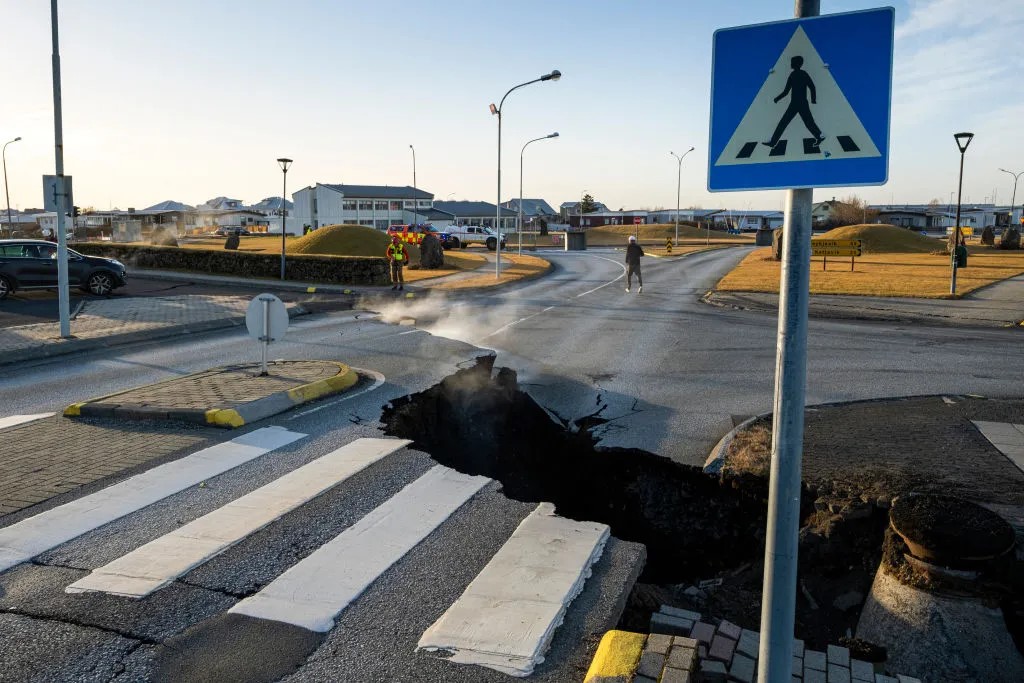The town of Grindavík, Iceland, is facing a critical situation which prompted the evacuation of more than 3,000 residents due to a potential volcanic eruption. Icelandic authorities have declared a state of emergency following concerning data provided by scientists at the Icelandic Meteorological Office. These experts have observed indicators signaling the likelihood of an eruption.
Even if the volcano does not erupt, it might be a while before residents can safely return to their homes. Countless earthquakes shaking the area are damaging the infrastructure, which will take months to fix.
Beneath the surface of northeastern Grindavík, magma has been detected moving closer to the surface. Reports from the IMO have called attention to the emergence of a graben-like formation, a crevice approximately three feet wide, carving through segments of the town due to the intrusion of magma. The United States Geological Survey defines a graben as a section of the Earth’s crust that has subsided or shifted downward relative to the surrounding crust, creating cracks that are splitting the Icelandic town apart.
Iceland has many hotspots for volcanic activity due to their location along Earth’s tectonic plates. The Eyjafjallajökull volcano is another active site that caused disruptions in 2010. A large ash cloud had formed over most of Europe and the Atlantic Ocean, affecting over ten million travelers by bringing commercial air traffic to a halt.
More than 20,000 earthquakes have hit Grindavík since late Oct. Over 2,800 struck the area between Nov. 11 and 12, all registering below a magnitude of 3.0. These tremors originated along a nine mile magma fissure located beneath the Earth’s crust, indicating the potential for a rupture near the Fagradalsfjall volcano.
As of Nov. 20, there has been a decrease in the number of earthquakes, suggesting magma has moved close to the Earth’s surface. “While there is still magma flow into the corridor, and while our data and models show that, that probability is imminent, and we really just have to wait in suspense for the next few days to see what happens,” Kristín Jónsdóttir, Head of the Volcano, Earthquake and Deformation Department at the Icelandic Meteorological Office said.
Potential Volcanic Eruption
Evacuations occur as authorities declare emergency
“Countless earthquakes shaking the area are damaging the infrastructure, which will take months to fix”
Image Courtesy of TIME Magazine





